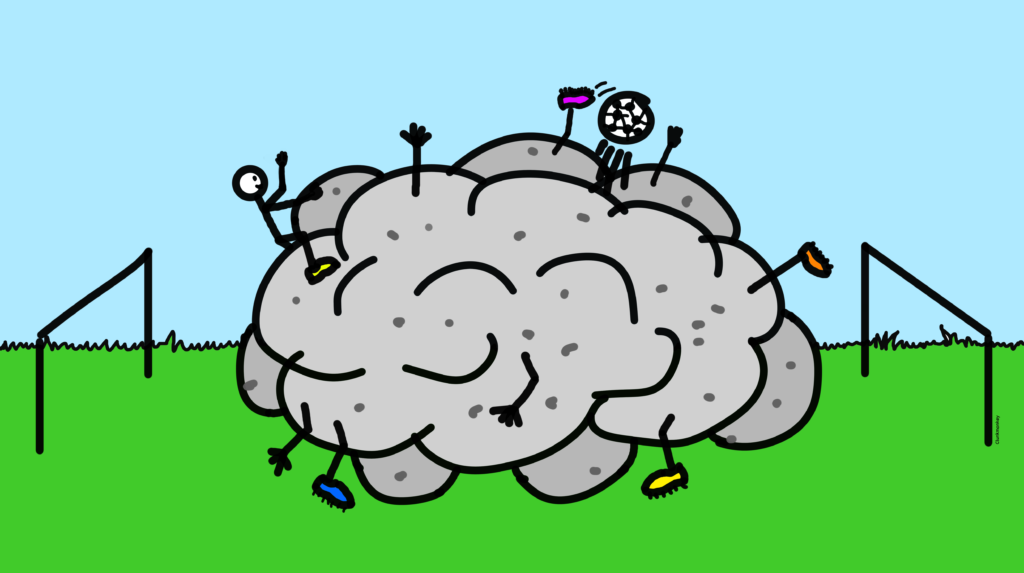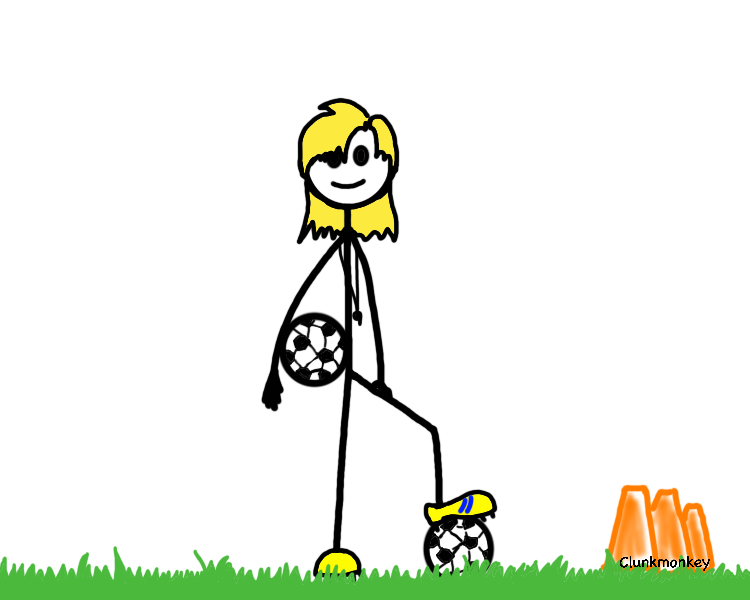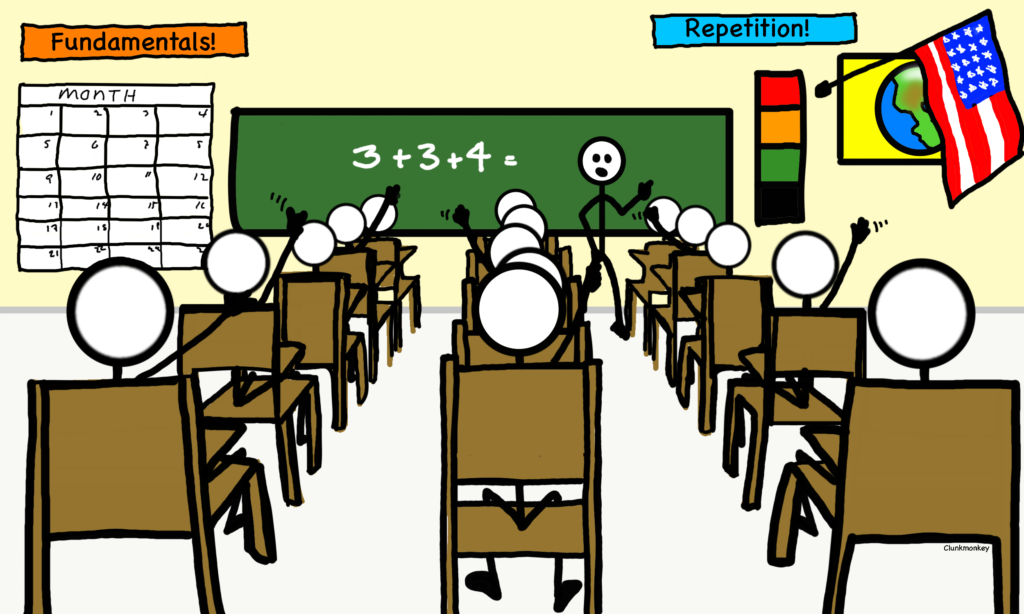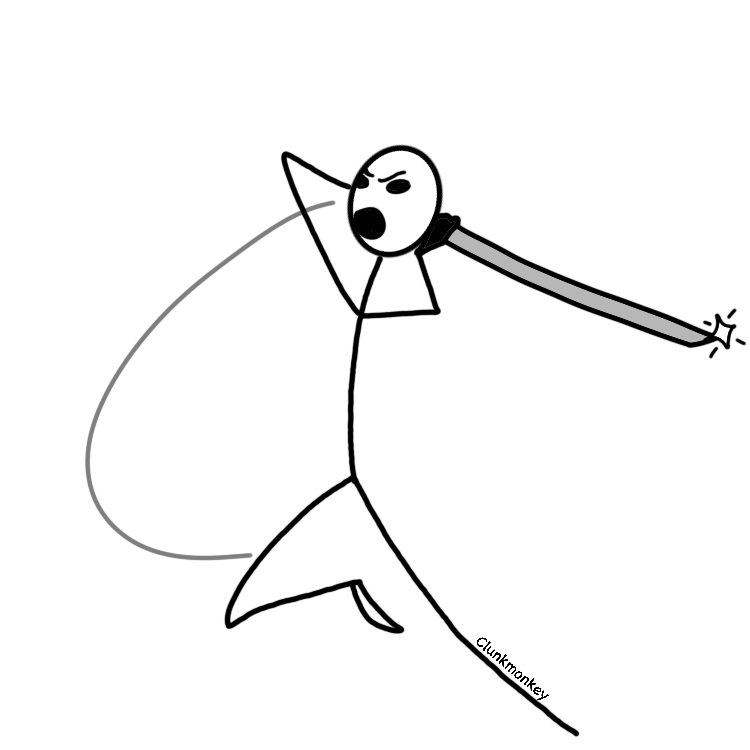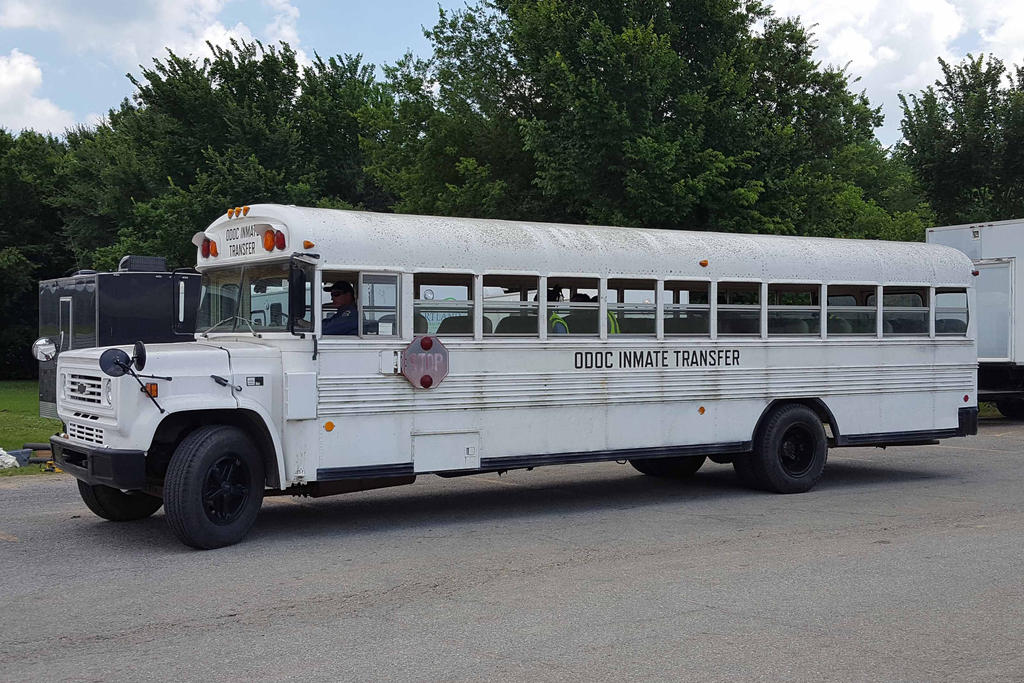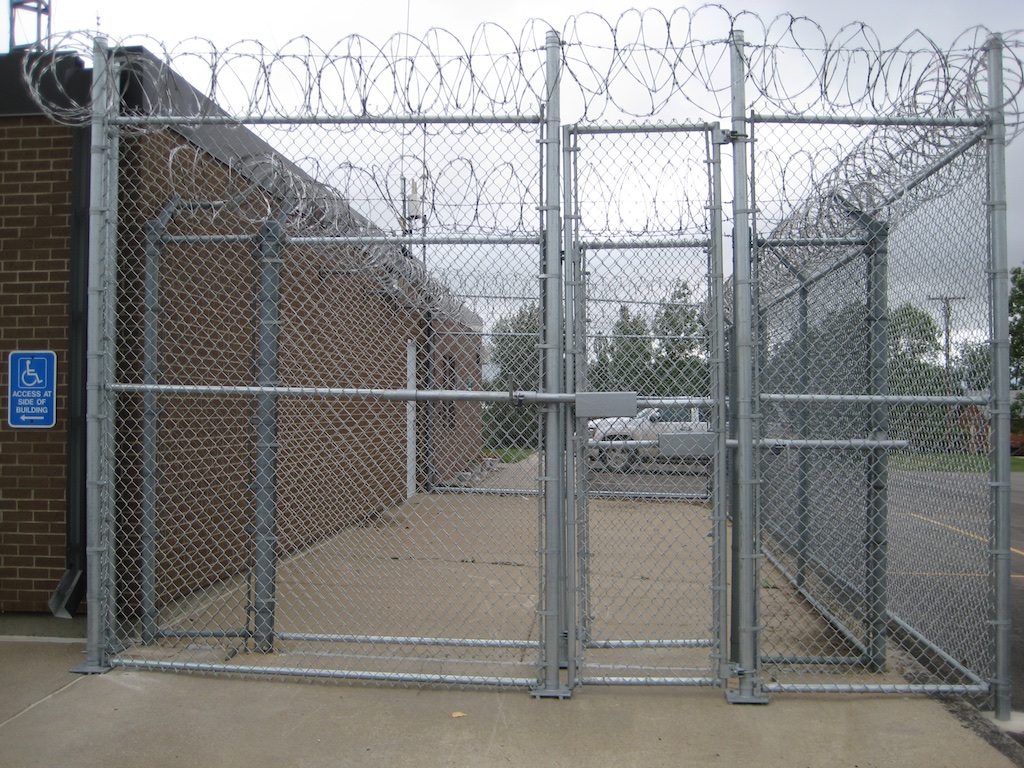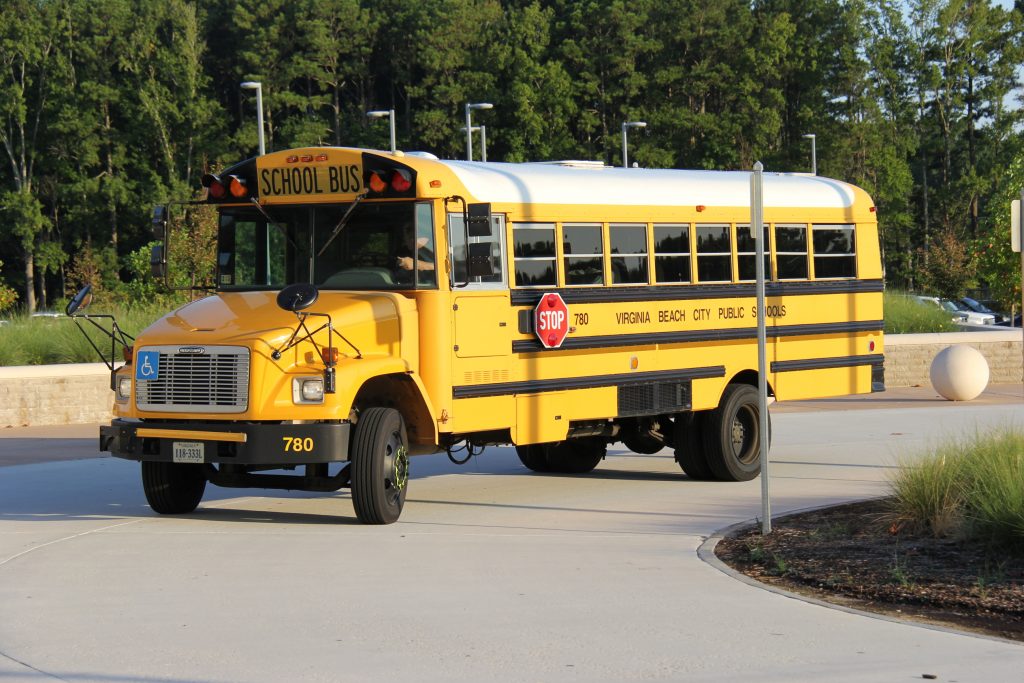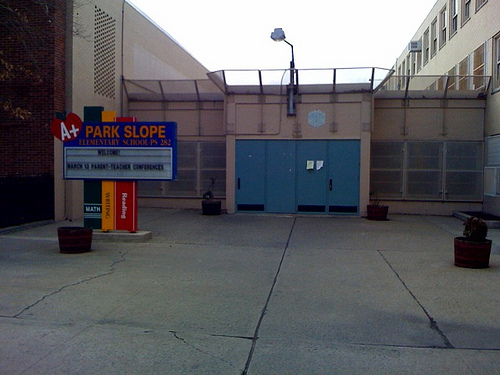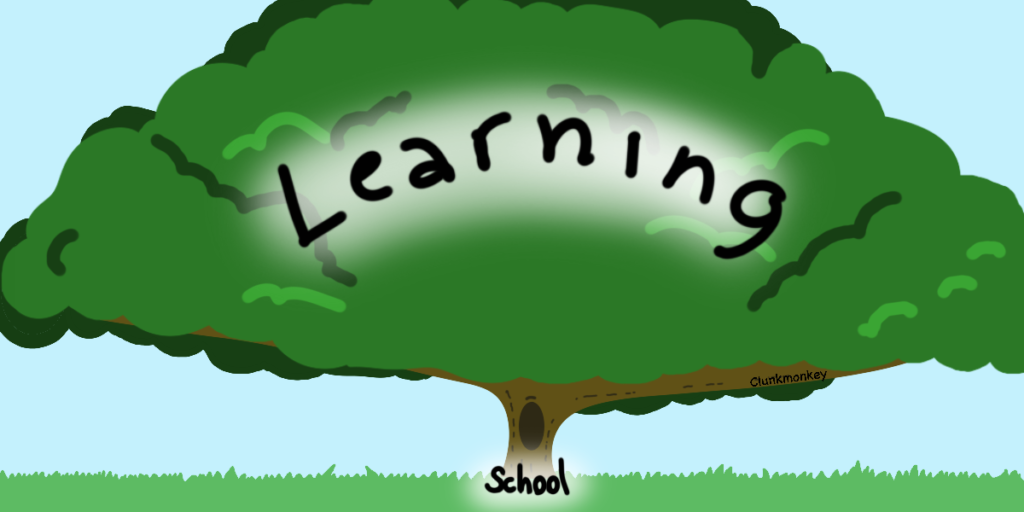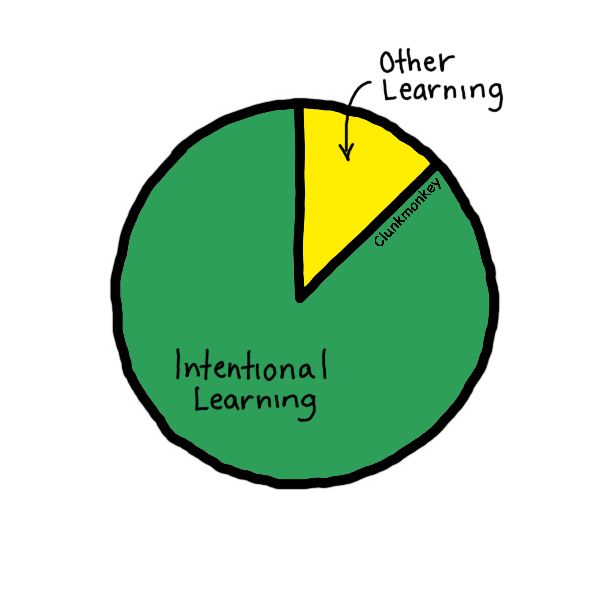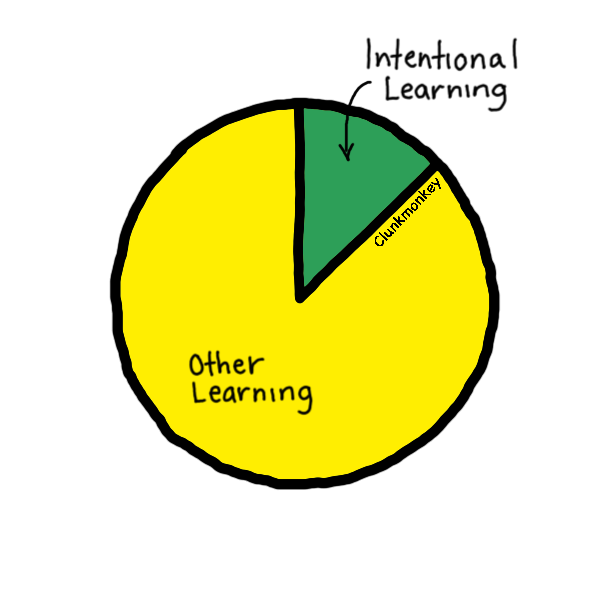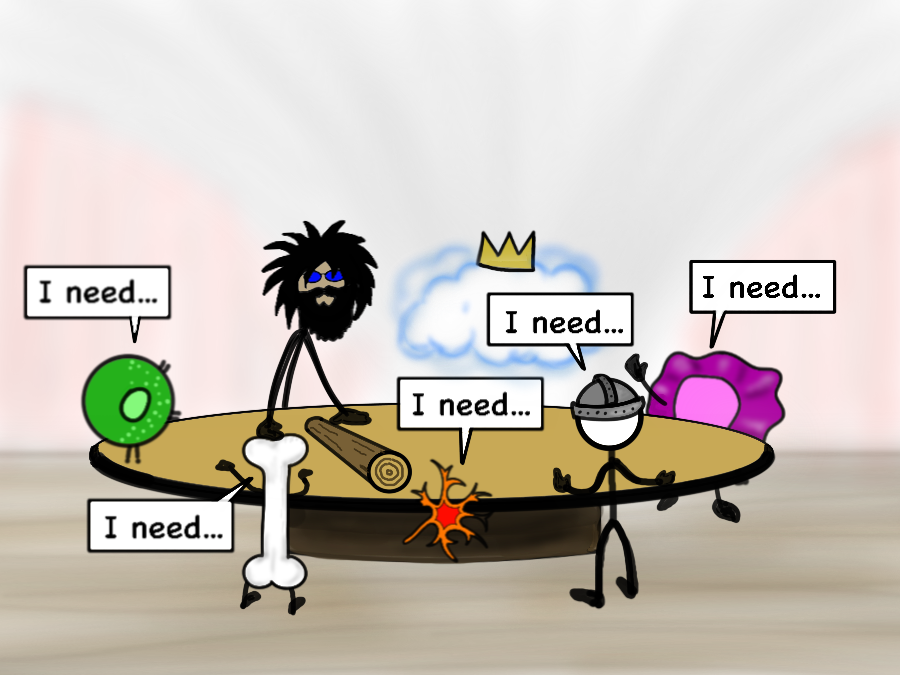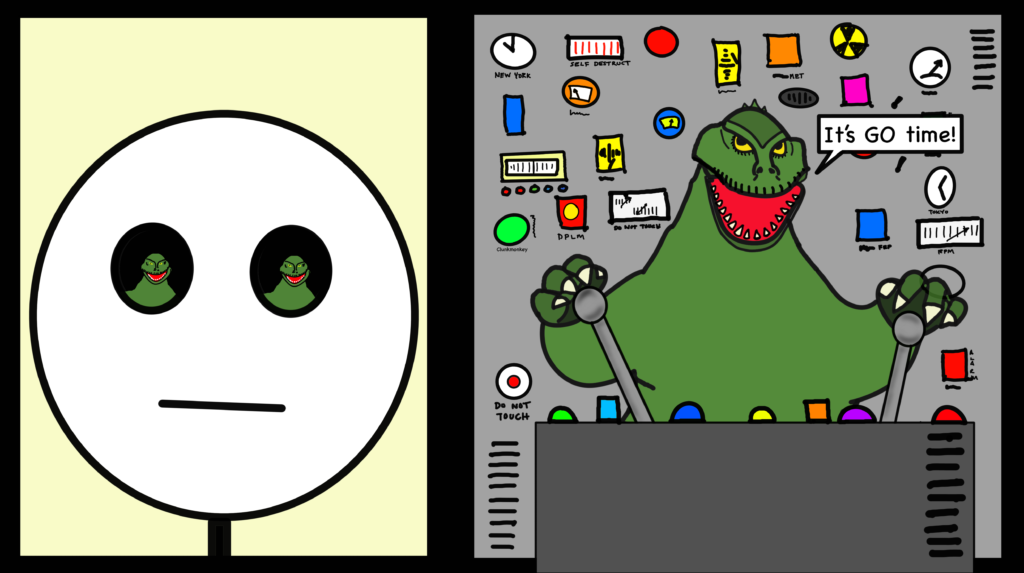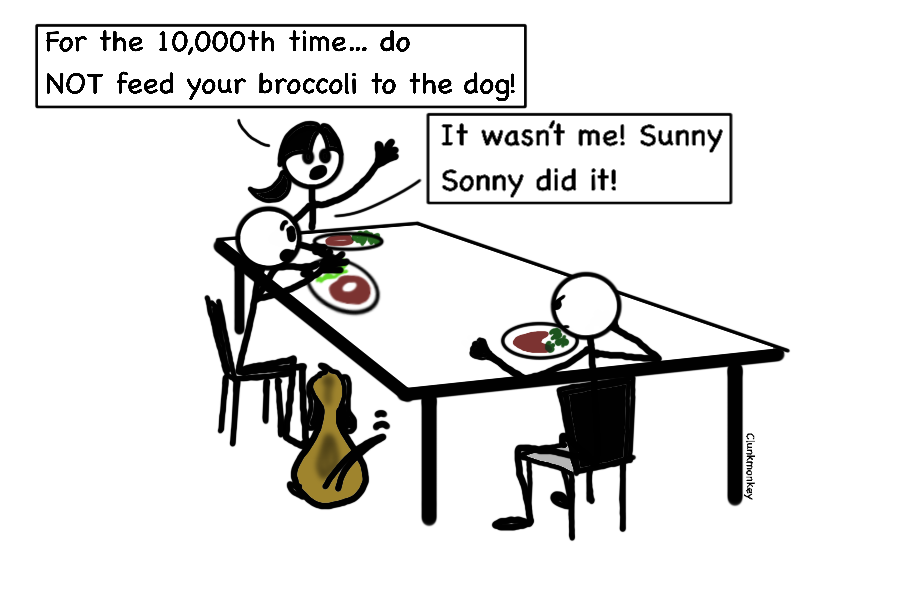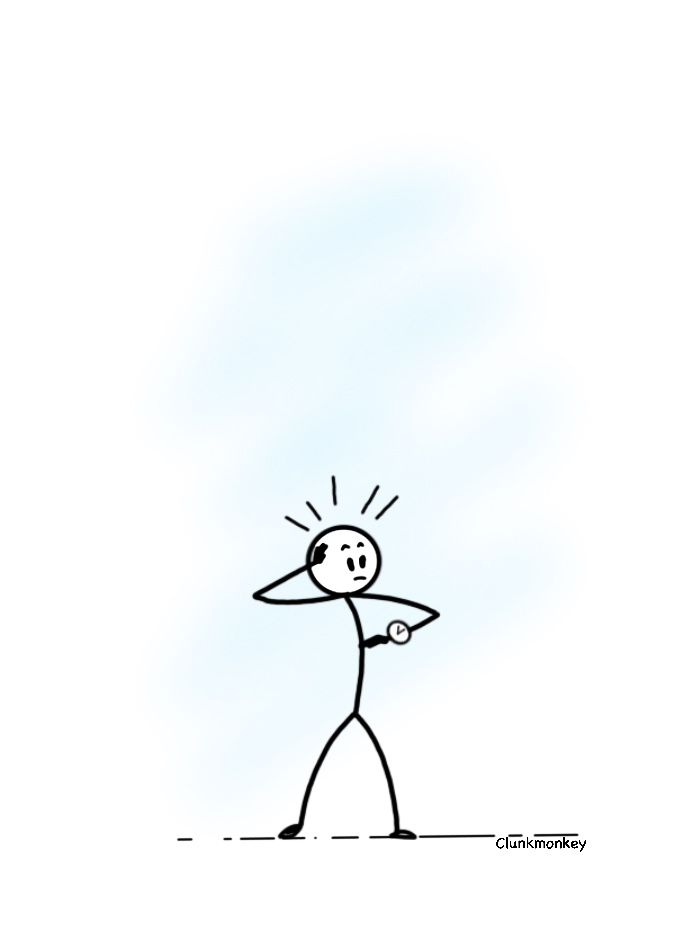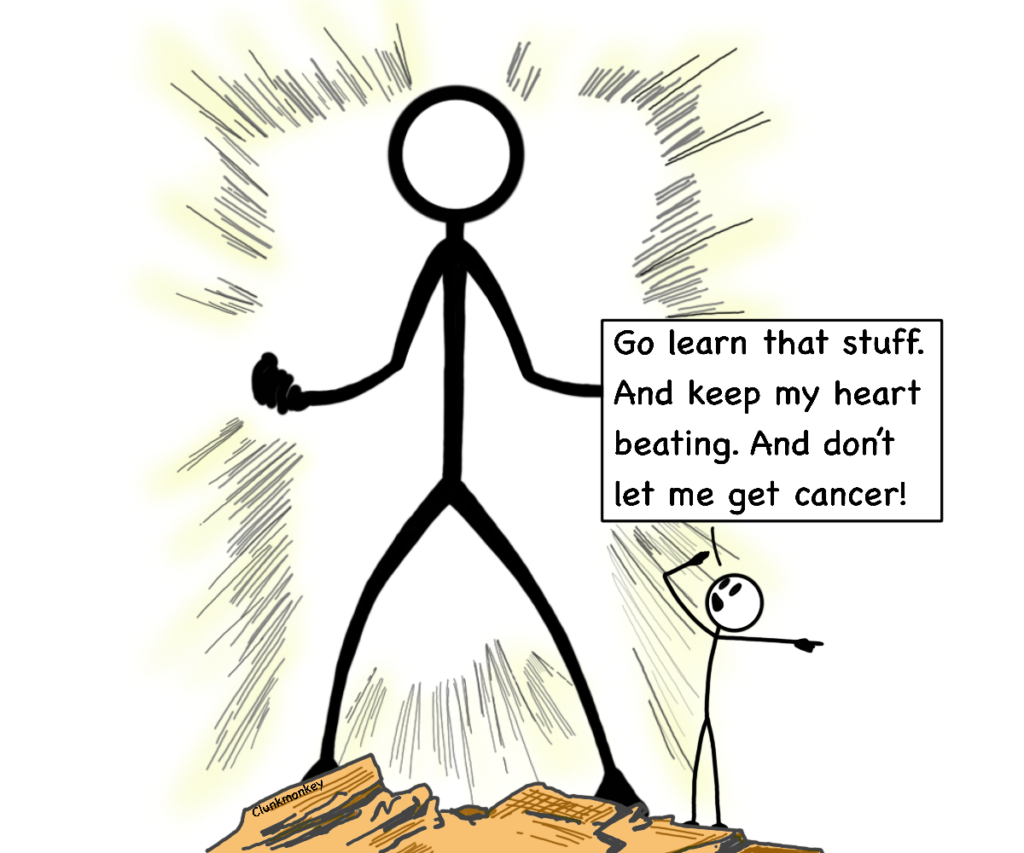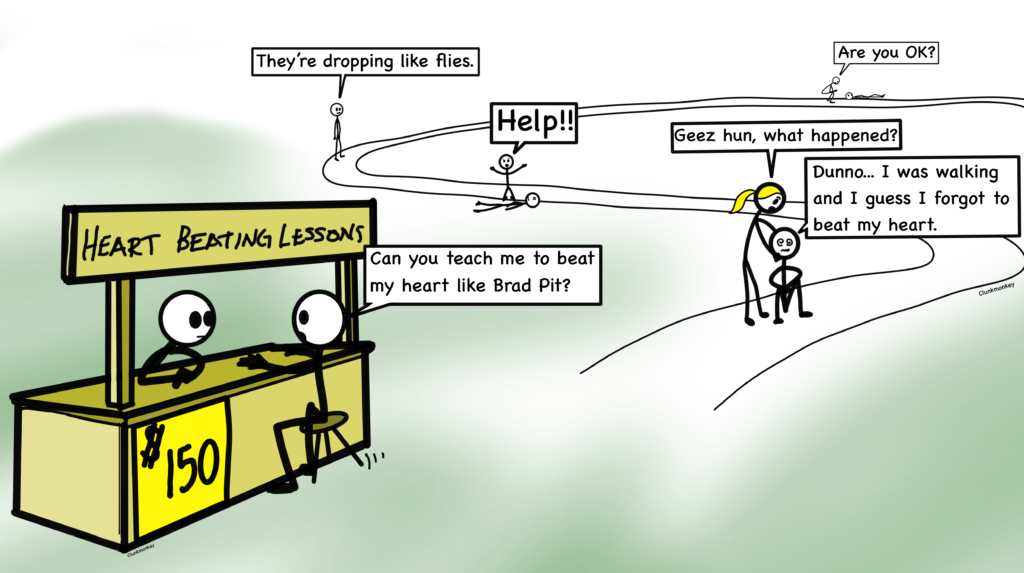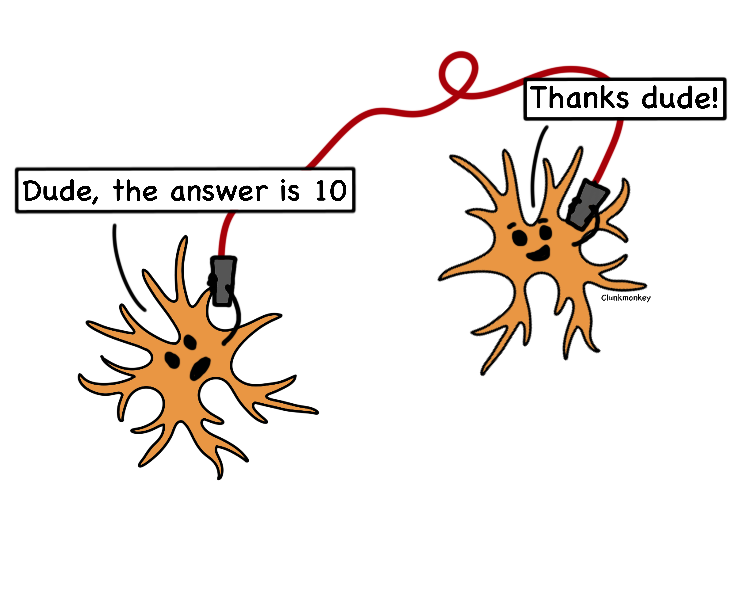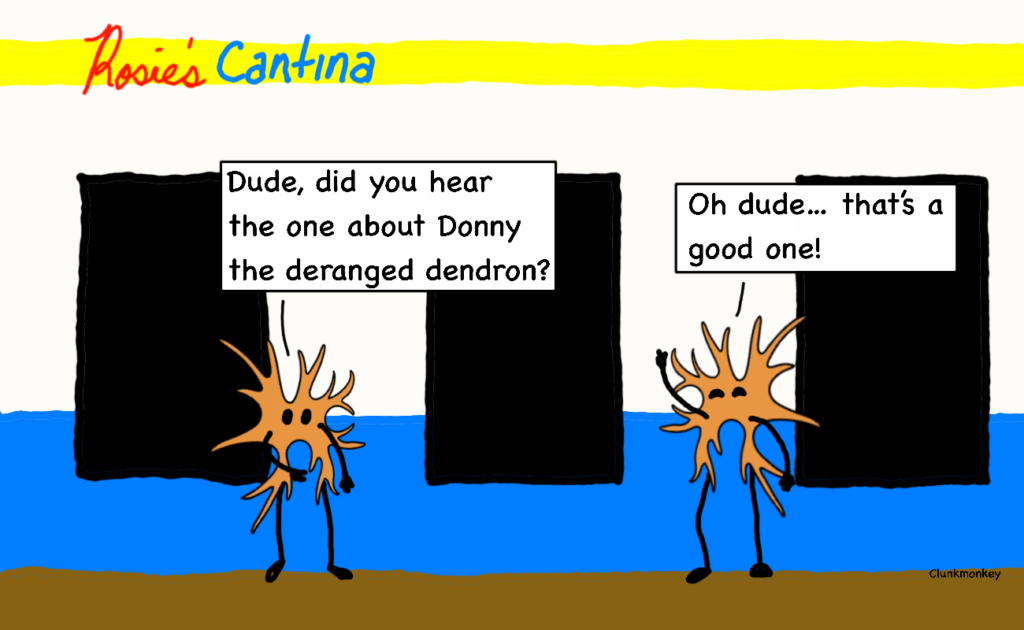When my oldest child was eight, his coach asked me to help him with his soccer practice. To be honest, my knowledge of soccer was probably equivalent to that of an eight year old. But as a father of three, I knew the main point of youth sport, from a parents perspective. (Tire the wild things out.) And I’m also a professional coach… sort of. So I figured that I wouldn’t be a total liability, and agreed to help.
Our plan was simple. Fill a one hour practice with sixty minutes of soccer… or some reasonable facsimile.
To this end, we split the kids into two teams, threw a ball on the field and… without a single word of instruction, let them have at it.
The kids PLAYED! An impenetrable cloud of dust surrounded the ball. It was an organically generated hybrid of rugby, wrestling, and… I swear I saw a pinch of rodeo too.
Whatever it was we were watching… it was NOT soccer. Not yet anyway.
Practicing on the field next to us was Sammy supercoach.
You know this guy. Soccer hair; a club team; coached at the high school; neon soccer shoes.
He even seemed to know a lot about soccer.
Supercoach’s kids waited obediently in lines. He taught them the correct positions and proper techniques. When their obedience waned… push-ups, and kangaroo hops brought them back into the fold.
Then Sammy drilled them. They snaked obediently through complaint orange cones. Ran through ‘agility’ ladders. And struck like speedy ninjas… on an undefended goal.
It was an orderly affair… structured… and precise.
Meanwhile, back on our field… mayhem.
We challenged our kids to keep the other team from scoring. And they did… by dragging anyone within ten feet of the ball to the ground.
We made tackling… and touching of the hair or face illegal. And they adapted. But it was a wild and woolly process.
The kids were exhausted when practice ended. They even experienced a few minutes of something that resembled soccer. Mission accomplished.
But as my friend and I were congratulating ourselves, I heard two moms from our team commenting on how much better Sammy Supercoache’s practice was.
“Yeah, it’s too bad our kids didn’t get on his team. They didn’t learn anything from these guys.”
* * *
What is learning? Ask any five people, you’re likely to get seven… or ten answers. Most of those answers treat learning as a noun.
Learning as a noun is a product that depends on pedagogy and testing.
And so, when most think about learning this is the image that comes to mind…
You can’t see their faces, but you know their smiling.
It’s understandable that we equate school with learning. We spent years there, being told that we were learning.
And it’s true. School is an excellent learning environment. Just not for math… or English… or science… or any other subject.
Revisit the image.
The straight lines. The raised hands. The flag. The calendar. The structure. The teacher. The obedience.
These kids are being conditioned.
Imagine… you pop into the corner store.
On the way out you get jumped by a psycho samurai.
Just as psycho is about to permanently dim your lights…
some crazy old guy shows up and beats the shit out of him.
The old guy promises to teach you how to fight… starting tomorrow.
The next day you report for instruction. Old guy gives you a bucket and a paint brush and puts you in front of a fence. He tells you to use up and down brush strokes only.
You finish the fence. Now you’re ready to learn to fight.
Nope. Now old guy wants you to learn how to polish cars. “Put the wax on this way. Take it of like that.”
You finish the cars and… more mindless labor.
“Look,” you say. “I really appreciate you saving my ass the other day. And if you want me to repay you… just say so. But puhlease stop stringing me on with the promise of teaching me how to fight.”
Old guy throws a stick at you. ‘Paint the fence!’ He yells. You do the paint the fence move… boom… you knock the stick away.
That was unexpected.
Then he throws a punch. ‘Wax on!’ You deflect his hand with the car wax move.
You look at your hands with surprise. Very cool!
I’m sure you recognize this as the moment in “The Karate Kid’ when Ralph Maccio, or Will Smith’s kid (depending your age) realizes that what he learned was much cooler than what he thought he was being taught.
School is like Karate Kid in opposite world. Told that we were being taught something super cool, we instead discover that we learned a bunch of lame shit.
Maybe you doubt that? Ok, how much of the subject matter that you “learned” in school do you remember? Second grade… fifth grade… tenth grade… it’s all kind of a blur isn’t it? In fact, the Carnegie institution estimates that we retain 3-5% of the information that we received in school.
Meanwhile we never forget that we are supposed to wait in line, ask permission to go potty, defer to authority, serve your flag, crave money, look for leadership, sacrifice today for tomorrow… etc.
Here are the six purposes of school… written by Alexander Ingles in 1917:
- Adjustive Function: Establish fixed habits of response to authority.
- Integrating Function: Develop conformity, like-mindedness, unity in thoughts and habits.
- Directive Function: Assign social role, track student towards it.
- Differentiating Function: Divide and conquer strategy to keep the layers in place.
- Selective Function: Preservation of the ‘favored’ races – tag the unfit, with poor grades.
- Propaedeutic Function: Grooming of those in higher classes to manage the lower classes.
Alexander Ingles helped design school. The Harvard University Honor Lecture in Education… the Inglis lecture, is named after him.
School as we know it is a product of “behaviorism”. Planned people. Life as a conditioned response.
These quotes reveal the true motives behind mass public education:
Henry Goddard, the head of Princeton’s Department of Psychology, “…school testing is a way to make lower classes recognize their own inferiority… and hopefully discourage them from breeding and having ambition.”
US President Woodrow Wilson. ‘We want one class to have a liberal education. We want another class, a very much larger class of necessity, to forgo the privilege of a liberal education and fit themselves to perform specific difficult manual tasks.’
University of Wisconsin sociologist Edward Ross, “Plans are underway to replace community, family, and church with propaganda, education, and mass media.”
And here are some excerpts from the first mission statement of Rockefeller’s General Education Board that he wrote in Occasional Letter Number One (1906):
“People yield themselves with perfect docility to our molding hands. We shall not try to make these people or any of their children into philosophers or men of learning or men of science. We have not to raise up from among them authors, educators, poets or men of letters. We shall not search for embryo great artists, painters, musicians, nor lawyers, doctors, preachers, politicians, statesmen, of whom we have ample supply. We will teach children to do in a perfect way the things their fathers and mothers are doing in an imperfect way.”
In 1989, a senior director of the Mid-Continent Regional Educational Laboratory told the fifty governors of American states that year assembled to discuss government schooling. “What we’re into is total restructuring of society.” (There is no record of a single governor objecting.)
Here are some of the tool our prison system uses to “mold” its clients:
Transport.
Food.
Security.
And here are the tools our schools use:
Transport.
Food.
Security.
Once you see it… you can’t unsee it.
But wait… there’s more. In the mid-1800’s, more than two-thirds of American states included the literacy rate of their citizens in their census data. It commonly ranged from 98-100%.
For decades the US military has been unofficially tracking literacy data in the form of induction examinations.
In 1942-44 (WW2) the literacy rate among draftees was 96%.
Only six years later, the literacy rates of those inducted into the Korean War was down to 81%.
And by the 1969-72 Vietnam War draft, the literacy rate had dropped to 73%.
What? You think the times have changed?
Did you know that administrators still distribute school text books with hundreds of substantive errors in them?
School is not a subject learning environment. It wasn’t created for your benefit.. it was designed for theirs.
A trees branches can spread broadly… but they always trace back to their source.
Those two moms from our soccer team preferred Sammy SuperCoach’s practice because it resembled school. They were sure that school type learning is best.
They were wrong.
What Counts as Learning?
For the most accurate picture of learning, we’ve gotta decide what counts as learning.
There is learning that we consciously “make” happen. And there is learning that happens to us.
Most people think the ratio of the two looks like this:
But… it’s more like this…
How is that possible?
One example, learning about weapons and history and battle strategy while playing Call of Duty.
Another, deeper, example… remember all the systems that make up the kingdom of you?
Your survival depends on these systems. Their abilities have changed as a result of experience. Every day they get better at what they do. You do not intentionally make that happen.
Does this count as learning?
The more or less ‘official’ position is that it doesn’t. That learning that happens without the intent to learn is the purview of a factory installed auto-pilot… once called the “lizard brain”.
You’ve gotta admit, a prehistoric lizard autopilot is a pretty crazy story.
Yes, I know it’s not meant literally. But still…
When I first heard this idea it reminded me of my imaginary childhood friend who always got me in trouble.
Most neuroscientists don’t subscribe to the lizard brain… or any multi-brain theory anymore. But they still consider our life functions to be innate… and therefore not learning.
The focus on our heads mandates that much of the learning that we didn’t consciously do, isn’t learning.
There is a great divide between our idea of ourself… this self-centered, paranoid, punctual person who thinks that it is the thinker of its thoughts…
And what we really are… this all powerful Super being that can do what our most advanced technology cannot… without even trying!
Do we really believe that the former has control over the latter? If everything that keeps you alive is out of “your” hands… I gotta ask, how much control can “you”… or what you think of as “you” really claim over your earth exploration vessel?
Deep inside we know that the “innate behaviors” story and our control story can’t be simultaneously true.
This is the source of that vague sense of background anxiety that always seems to be there. The worry about what the other part of me is doing to me behind my own back?
If you’re able to do all that amazing stuff without even knowing you’re doing it, don’t you wonder what other amazing stuff you could be doing… unawares? I do.
Although I will offer this anecdotal observation: after more than 30 years of coaching… watching people fumble the most basic of instructions, I do understand why Ma Nature would put our most essential functions up on the top shelf… as far out of our reach as possible.
I’m not saying nature did it. Just that if she did, I understand why.
A Closer Look
Let’s zoom in and have a look at what’s going on at the cellular level.
Here’s the parts list: neurons, axons, dendrons, myelin, glia, synapses, and proteins. There are others, but these will do.
Neurons send neurotransmitters to other neurons. Dendrons and axons help… somehow. Glia does… well, no one is sure. Same with myelin. A synapse is the small space between two cells, where communication happens. And proteins also play a big role… but no one is sure exactly how they do.
Let me guess, you were hoping for something a little more… concrete? Yeah… me too.
The technical definition of “learning” is the “wiring together” of neurons that makes their communication faster and more efficient.
At least… we’re pretty sure that’s what it is. You see… no one has ever seen this happen in a human. We arrived at this current understanding by studying sea slugs.
In the 1960’s Eric Kandel picked a brand of sea slug that had few neurons… that were also big enough to work with. He repeatedly did stuff to the slug, then examined the slugs neurosystem for changes.
The discovery won him a Nobel prize.
Neurons are neurons, right?
Maybe. Probably. But then again, maybe not. We won’t know until we know… you know?
Beyond that… how information gets turned into a neurotransmission… if it gets turned into a neurotransmission… what one neuron said to the other when they were walking out of a bar…
We don’t know.
And listen… even some of the stuff we’re sure we know… often turns out to be iffy. One example, for more than five decades researchers were sure that the brain had 100 billion neurons. It occurred to Suzanna Herculana-Huzel that no one knew where that number came from. So… she counted them. The actual number is 86 billion… plus or minus.
Your brain has around 86 billion neurons. As many as 100 trillion connections between them. And as many as a thousand proteins – in varying strengths and configurations… at every connection.
Even if we could record the state of every neuron AND the state of all 100 trillion connections AND the configurations and strengths of the proteins at every connection, that information would be useless to everyone but you. Because no two brains are the same.
But that’s ok… for now. We have a definition: learning is the wiring together of neurons.
In the next chapter we’ll talk about how it happens.
Up next… how we learn.

